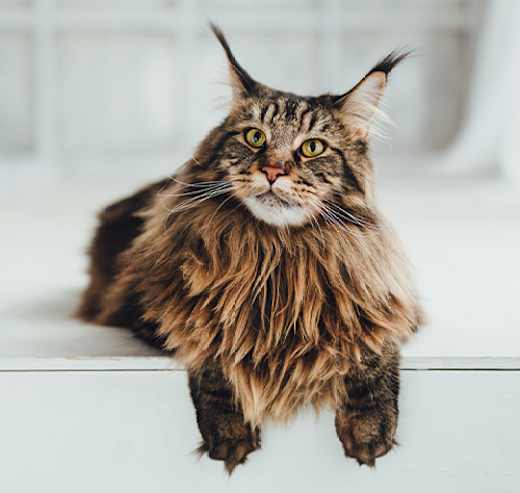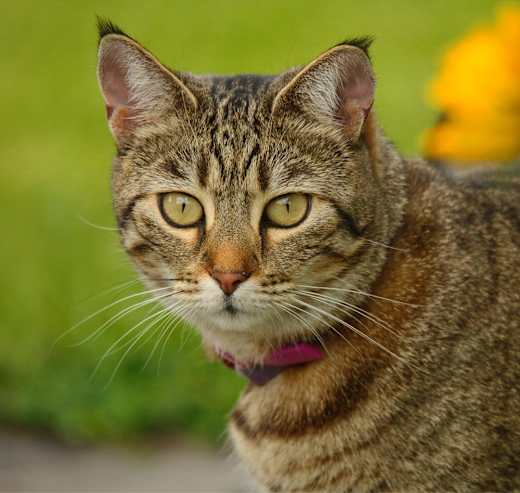Polydactyl cats aren’t incredibly rare, especially among purebred cats like Maine Coons. However, most cats are domestic shorthairs or longhairs (mixed breeds), so the gene gets diluted within the larger mixed-breed population, making it less common.
Polydactyl
Breed Type: Western
Common nicknames: Hemingway Cats, Mitten Cats, Boxing Cats, Snowshoe Cats, Thumb Cats, Six-Fingered Cats
Coat: Short-haired, long-haired
Hypoallergenic: No, they will likely trigger allergies.
Temperament: Friendly, affectionate, intelligent, energetic
Life expectancy: 12-16 years
Color & patterns: Brown
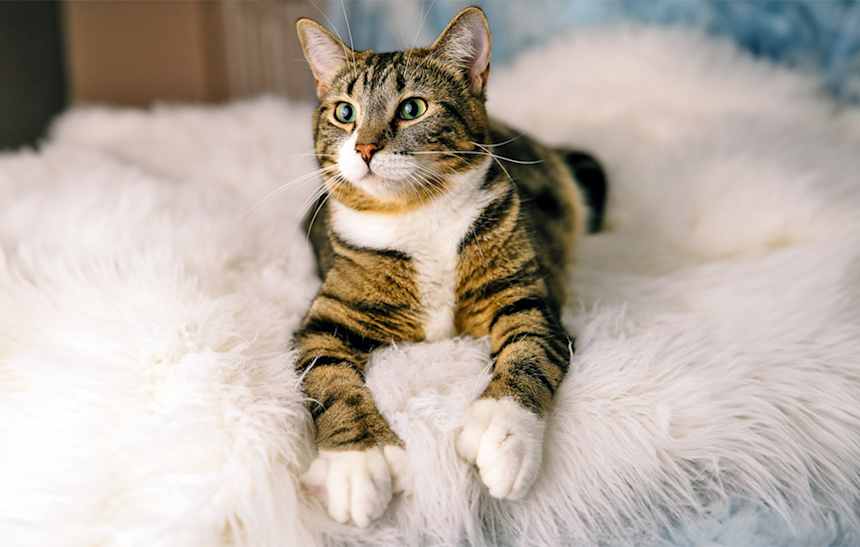
The Polydactyl is famously known for their extra digits: Some sport as many as seven toes on each paw. This breed is named after the legendary writer Ernest Hemingway, who developed a fondness for these unusual cats after being gifted one by a ship’s captain. His former Key West, Florida home is now a sanctuary for these special felines.
Polydactyl characteristics
Learn about about Polydactyl basics like their fur colors, shedding levels, how much grooming they need, and other Polydactyl facts.
Average height
10-12 inches (25.4-30.5cm)
Average weight
8-14 pounds (3.6-6.4 kg)
Average lifespan
12-16 years
Good with other cats
Good with dogs
Affection
Shedding
Health
Exercise needs
What color coat does a polydactyl have?
Polydactyl cats can have any color coat. The genetic mutation that affects the number of toes does not affect fur color or pattern.
How big do polydactyl cats get?
Most polydactyls weigh between eight and 14 pounds and stand around 10 to 12 inches tall.
When do polydactyl cats stop growing?
Like other cats, polydactyl cats tend to stop growing around 18 months. However, depending on genetics and overall health, their size can vary.
What is a polydactyl cat?
A polydactyl cat is a feline born with more toes than the usual number on each paw. Polydactylism is a genetic abnormality and can occur in any breed of cat. These extra toes can appear on the front paws, the back paws, or even all four paws of the cat. The number of extra toes can vary too.
What breeds of cats are polydactyl?
Maine coon cats and Pixiebob cats have a higher prevalence of polydactyly compared to others. That said, any cat can be born polydactyl due to a dominant genetic mutation passed down from one or both parents.
How long do polydactyl cats live?
Like other domestic cats, polydactyl cats can generally live for 12 to 15 years with a healthy lifestyle and nutrition.
Are polydactyl cats inbred?
No, polydactyl cats are not inbred. A dominant genetic mutation causes polydactyly, meaning that if a kitten inherits the gene for extra toes from at least one parent, they have a chance of being born polydactyl.
How many toes does a polydactyl cat have?
Polydactyl cats can have six or seven toes on their paws. The additional toes can be fully formed and functional or might be smaller and appear like stubs.
Polydactyl health
Learn about about the Polydactyl health outlook and what diseases they may be prone to at various stages of their life.
Do polydactyl cats have health problems?
Polydactyl cats are prone to the same health conditions as any cat, including:
Ingrown claws: Polydactyl cats are prone to having their extra toe claws grow into the paw pads. Regular nail trimming will be essential to keep this from becoming an issue.
Improperly formed toes: In some cases, the extra toes might be small, fused together, or lack proper bone structure, and could be more prone to injury or discomfort.
Chronic kidney disease (CKD): This is a common condition in cats in which the kidneys gradually lose function over time, leading to issues such as dehydration, weight loss, and increased thirst and urination. It’s often managed through diet, medication, and regular check-ups to maintain quality of life.
Diabetes: This complex disease prevents the body from properly regulating blood sugar levels
Hyperthyroidism: This thyroid malfunction results in an overproduction of thyroid hormone and could cause weight loss, excessive thirst, panting, diarrhea, and obesity.
Gingivitis: This inflammation of the gums can lead to periodontal disease.
Hypertrophic cardiomyopathy (HCM): Certain cats may be prone to this inherited heart issue, a condition where the heart muscles thicken, impacting the heart’s ability to function effectively.
Obesity: Cats have a hearty appetite and are prone to obesity. It is best to give them scheduled feeds and minimal treats.
Do polydactyl cats shed?
Yes, polydactyl cats can shed as much as any other cat.
Are polydactyl cats hypoallergenic?
No, polydactyl cats are not hypoallergenic; there’s no such thing as a truly hypoallergenic cat. While some breeds might produce less Fel d 1 protein (the main allergen in cat dander), even these cats can trigger allergies in some people.
Do you need to groom a polydactyl cat?
Yes, you need to groom a polydactyl cat. Short-haired polydactyls should be brushed weekly, while the long-haired variety can be brushed two to three times a week. In addition to brushing, all cats should have their claws trimmed every two weeks or so. Cats are also prone to periodontal disease and should have their teeth brushed two to three times a week.
Polydactyl history
Learn about where the Polydactyl came from.
Where are polydactyl cats from?
Polydactyl cats are most often found in Wales, Southwest England, and along the East coast of North America, as they were spread on ships going to and from Boston and Great Britain. American Polydactyl is a rather new and developing “breed” of cat that is currently only officially recognized on the Rare and Exotic Feline Registry.
Polydactyl temperament
Learn about about the Polydactyl temperament and how well they fit into your lifestyle, home environment, and family.
Do polydactyl cats meow a lot?
Like any other cat, how much polydactyl cats meow depends entirely on the individual animal. Polydactyly has absolutely no effect on a cat’s vocal cords or their desire to meow.
Are polydactyl cats friendly?
Yes, polydactyl cats are just as friendly as any other cat. Most cats are known to be incredibly affectionate with their pet parents.
Are polydactyl cats good with other cats?
Whether or not polydactyl cats are good with other cats depends on the nature of that individual cat. Some cats are naturally more social and outgoing, while others prefer solitude.
Are polydactyl cats good with dogs?
Whether or not polydactyl cats are good with other dogs depends on the nature of that individual cat. A calm, gentle dog is more likely to get along with a cat, regardless of the cat’s toes.
Are polydactyl cats good hunters?
Any cat’s hunting ability depends on a variety of factors beyond paw structure. These include their eyesight, hearing, stalking instincts, and overall agility. However, polydactyl cats’ extra toes might give them a better balance, which could be advantageous when hunting.
Are polydactyl cats good indoor cats?
Yes, polydactyl cats are good indoor cats. For safety reasons, it is recommended that all cats be kept indoors.
Are polydactyl cats active?
Polydactyl cats, despite their extra toes, generally don’t have any significant differences in activity level compared to regular cats.
Are polydactyl cats smart?
Like any cat, a polydactyl cat’s intelligence depends on various factors such as genetics, individual personality, and enrichment in their environment.
Find Polydactyl kittens near you
Adopting a Polydactyl
Learn about acquiring a Polydactyl - the pros and cons of adopting versus going through a breeder, and associated costs.

biscuit-making🍹Mai Tai
Polydactyl/Hemingway
Female, 2 yrs 1 mo
North Hollywood, CA
Not good with dogs
Good with cats
Spayed or Neutered
Shots are up-to-date
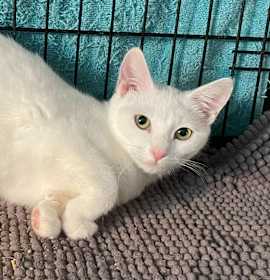
Chata
Polydactyl/Hemingway Domestic Shorthair
Female, 1 yr 1 mo
Los Angeles, CA
Good with cats
Spayed or Neutered

Peanut
Polydactyl/Hemingway Domestic Shorthair
Male, 4 yrs 5 mos
Los Angeles, CA
Spayed or Neutered

Richard
Polydactyl/Hemingway
Male, 7 mos
Los Angeles, CA
Spayed or Neutered

Cornelia
Polydactyl/Hemingway Siamese
Female, 5 mos
Los Angeles, CA
Spayed or Neutered

Orbit
Polydactyl/Hemingway Domestic Shorthair
Female, 8 mos
Los Angeles, CA
Good with cats
Spayed or Neutered
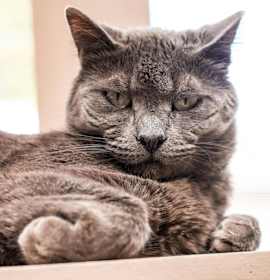
Flower
Polydactyl/Hemingway Domestic Shorthair
Male, 11 yrs 3 mos
Los Angeles, CA
Good with dogs
Good with cats
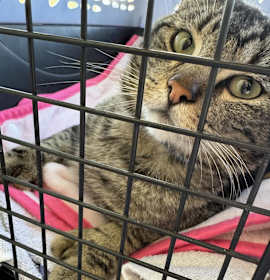
Cane
Polydactyl/Hemingway
Male, 5 yrs 9 mos
Simi Valley, CA

biscuit-making🍹Mai Tai
Polydactyl/Hemingway
Female, 2 yrs 1 mo
North Hollywood, CA
Not good with dogs
Good with cats
Spayed or Neutered
Shots are up-to-date

Chata
Polydactyl/Hemingway Domestic Shorthair
Female, 1 yr 1 mo
Los Angeles, CA
Good with cats
Spayed or Neutered

Peanut
Polydactyl/Hemingway Domestic Shorthair
Male, 4 yrs 5 mos
Los Angeles, CA
Spayed or Neutered

Richard
Polydactyl/Hemingway
Male, 7 mos
Los Angeles, CA
Spayed or Neutered

Cornelia
Polydactyl/Hemingway Siamese
Female, 5 mos
Los Angeles, CA
Spayed or Neutered

Orbit
Polydactyl/Hemingway Domestic Shorthair
Female, 8 mos
Los Angeles, CA
Good with cats
Spayed or Neutered

